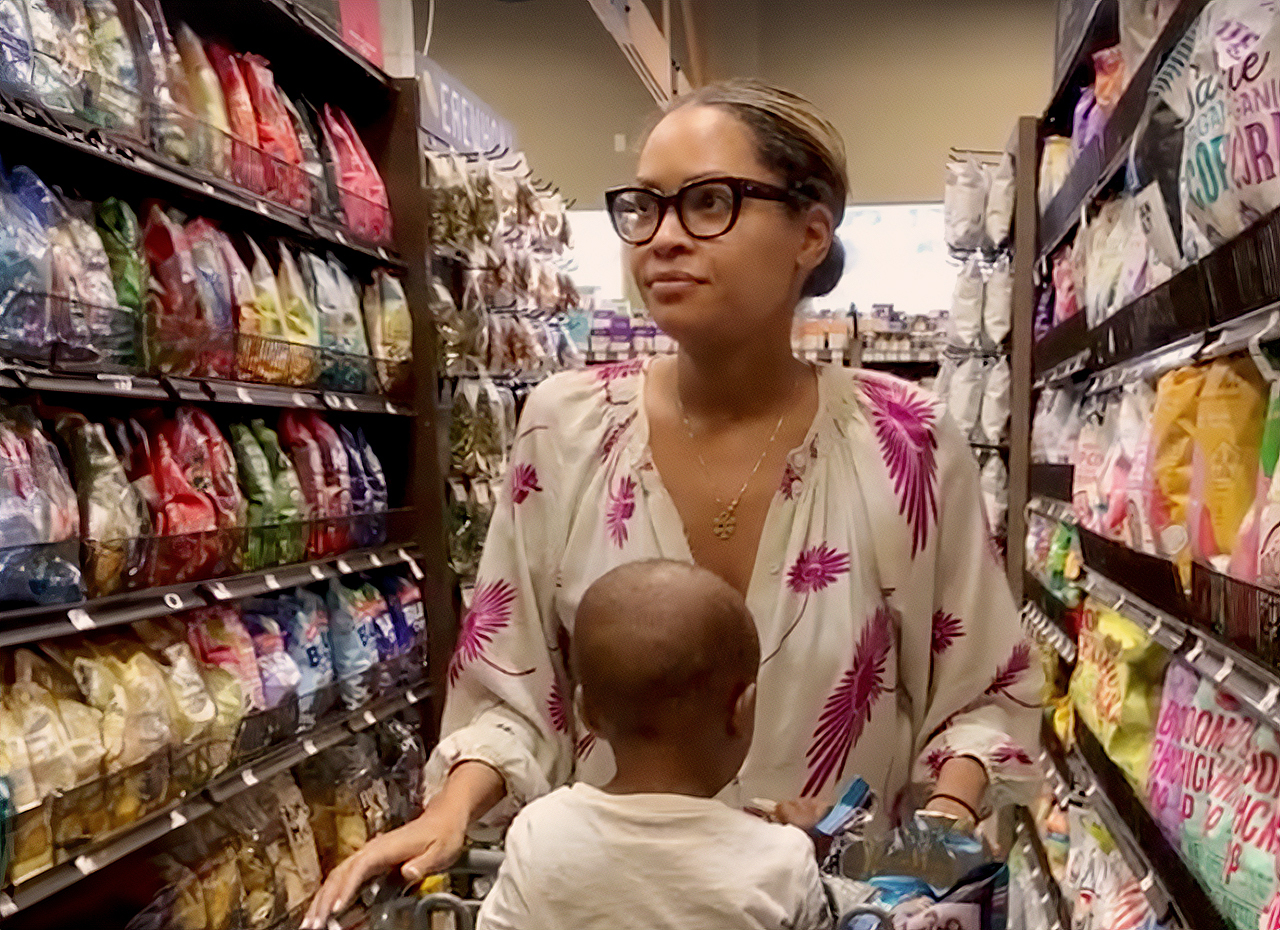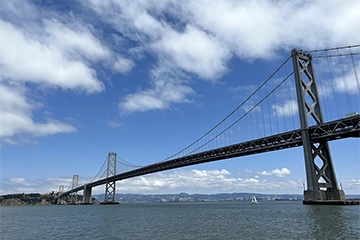End Greenwashing in Sustainability Messaging
How third-party verification and stronger regulation aid a credible green transition

[fs-toc-h2] The Making of a "Climatarian"
While grocery shopping, do you sometimes read packaging and labels? I do. My habit began while I was raised in Brooklyn, NY to religiously avoid pork, lard, gelatin, etc.. I was also enamored with the decorative boxes of cold breakfast cereals, e.g., Mr. T, Ice Cream Jones, OJ’s, E.T. Cereal, Gremlins, Bigg Mixx, Rainbow Brite, etc. It was such a treat to see something new on a favorite item. Nowadays, I scan packages not only for ingredients, nutrition, and marketing info but also for environmental, labor, and climate change messaging.

Yup, you guessed it – I do the “climatarian” thing, i.e., striving to reduce the carbon dioxide (CO2) footprint of my consumption. Here’s why: scientists at the United Nations International Panel on Climate Change (IPCC) conclude there’s a 95% or greater probability that humans are the cause of excess CO2 in the atmosphere, a greenhouse gas (GHG) that drives global warming, which results in climate change (e.g., long term excess rain and flooding, extended droughts, lingering heat domes, melting glaciers and permafrost, warmer ocean surface water resulting in more powerful hurricanes, climate migration, and on and on becoming regular occurrences). The IPCC strongly recommends that humans rapidly cut 43% of human society’s collective excess CO2 emissions by 2030, become net zero CO2 emissions by 2050, and sequester excess emissions above 350 ppm. Based on the annual report from NOAA’s Global Monitoring Lab, global average atmospheric CO2 was 417.06 ppm in 2022, setting a new record high. While our situation is daunting, climate change is addressable. And, progress towards the IPCC goals will mean future lives saved and much more.
[fs-toc-h2] Things Aren't Always What They Seem
While unpacking groceries several weeks ago, I noticed a claim “made by a carbon neutral company.” After a quick climatarian shimmy in my kitchen, I settled down because I know things are not always what they seem when it comes to “green” claims. As brands in the U.S. began touting themselves as environmentally friendly in the '60s and '70s, astute observers (whether competitors, whistleblowers, consumers, journalists, or government regulators) sought to know and reveal the truth about exaggerated, misleading, or false claims of environmental friendliness. Now, with green claims scrutinized amid legal, contractual, and reputational risk, there has been a vast improvement in applying rigor to measuring impacts regarding GHG, water, pollutants, energy use, and more.
At a high level, climate change is a consumption-driven crisis. Think about it: a supermajority of science-backed solutions address consumption in one form or another (e.g., renewable energy, climate smart agriculture, electrified transportation, climate smart clothing materials, green manufacturing practices, greener waste management, etc.). To reach the IPCC emissions targets, we need to alter how and what we consume, which is inclusive of how and what is sourced, produced, and ultimately discarded. This alteration will either be a revolutionary systemic rethinking of consumption or an evolutionary systemic adaptation of consumption. In the latter, if I knew my consumption did not contribute to excess CO2 emissions or even helped remove excess CO2 emissions, I would be playing one of several important roles (e.g., reducing my CO2 footprint and sending a signal to market that climate friendly products are in demand). This is where that “made by a carbon neutral company” claim matters.
How the heck do I know what “carbon neutral company” means let alone “carbon negative” or “netzero”? More importantly, how do I know the claim is accurate and trustworthy? Most consumers will not invest the time to figure this out or question the claim to the point of resolution. And, despite honorable motivation, doing so for everything we consume would feel too onerous for too many people. Yet, given our critical situation (e.g., heat domes for breakfast, record-breaking floods for lunch, drought for Sunday dinner), we need reliable signals to shift our consumption away from excess CO2 emitting life cycles.
“How do I know what 'carbon neutral company' means?”
Those signals, however, cannot merely be pinky swear statements from brands. From a U.S. regulatory standpoint, the U.S. Federal Trade Commission (FTC) issued the “Green Guides” in 1992 (revised in 1996, 1998, and 2012) to: 1) provide general principles that apply to all environmental marketing claims; 2) show how consumers are likely to interpret particular claims; 3) show how marketers can substantiate these claims; and 4) show how marketers can qualify their claims to avoid deceiving consumers. Despite the existence of the Green Guides and the vast improvement in measuring impacts, greenwashing claims still occur. We need to avoid “greenwashing,” i.e., unsupported, unverified, misleading, or dishonest claims that a product (or service) has a positive climate or other environmental benefit. Greenwashing not only fails to produce the impact sought by consumers, it also breeds cynicism and confusion. If a consumer is not sure or is skeptical about the impact, why would a consumer make a dubious green choice?

You may be thinking: “Here we go again – placing the burden on the consumer to choose what’s right from a wayward system” or “Look out for a woke capitalism shimmy!” I agree that for systemic problems we need system scale solutions and that solely relying on complex consumer choices without systemic solutions is a plan built for failure. However, personal consumption is where individual choices and systemic solutions meet. Brands need to act consistent with systemic solutions. At the systemic scale, for example, if we created and enforced a requirement for brands to regularly report CO2 and other greenhouse gas (GHG) emissions, actively regulated green claims, incentivized differentiation on CO2 and GHG emissions, and incentivized clean(er) or green(er) consumption, perhaps we could begin to dramatically shift consumption patterns consistent with the overall IPCC goals. (See rising electric vehicle sales in Europe, China, and the U.S.)
[fs-toc-h2] New Regulations, More Rigor
In May 2023, the European Parliament voted to support new rules to improve product durability by combatting greenwashing and misleading claims on consumer labels, such as ‘CO2 neutral’ or ‘carbon neutral.’ The proposal for a new directive on empowering consumers for the green transition was voted in plenary by an overwhelming majority of 544 votes in favor, 18 against and 17 abstentions, opening the way for talks with EU member states to finalize the law. The directive aims to help consumers more easily make environmentally friendly choices and encourage companies to offer them more durable products.
Today, U.S. consumers interested in increasing their green consumption struggle to select cleaner and greener products when they can’t differentiate among choices and brands either do not make clear the differentiation or do not offer the green choices. The differentiation responsibility is on the brand, not the consumer. If brands invest in package design, catch phrases, and color schemes to drive differentiation (none of which improve product performance), brands can invest bandwidth to determine their impact and demonstrate alignment with the IPCC and science based targets while reliably indicating such on packages and correlative websites.
Claims such as “CO2 neutral” or “carbon neutral” can be true but they can also be quite misleading if not worse. There needs to be rigor, accuracy, and transparency – not merely back of the envelope calculations arising from a brand happy hour chat. Remember, we need measurable progress in our fight against climate change in order to save lives.
“There needs to be rigor, accuracy, and transparency – not merely back of the envelope calculations.”
Recently, I was asked to opine on a green claim where the claim presupposed that because a supplier’s ingredient ends up in a “green” finished product, that such a supplier could take credit for the GHG footprint of the entire green finished product. If that were the case, it seems like every ingredient supplier to a green finished product could take credit for the GHG footprint of the green finished product. That doesn’t seem right. If I supply leather upholstery to a couch made from reclaimed wood, while it’s possible the overall carbon footprint could be low, neutral, or negative, that should not mean that I can simply claim that my leather upholstery business is environmentally friendly and that I don’t need to address my GHG footprint.
[fs-toc-h2] Revisiting the Green Guides
The FTC requested public comment on revising the Green Guides late in 2022. Importantly, the FTC focused on whether society has changed with respect to environmental interest and causes since 2012, whether the guides have provided benefits or imposed costs on consumers and businesses, and whether the guides should propose rulemaking to formalize principles. These are important considerations for a revision. For example, two weeks ago, I noticed a company stating that in the last two years, thirty of its divisions had achieved carbon neutrality. Awesome! Yet, there was no mention of the total quantity of divisions and the activity of each division. The answer could represent that either 7% or 70% of the company is carbon neutral. Permitting brands to mislead consumers about CO2 emissions amid climate change is brazen, unfair to competitors, and counterproductive in the grand scheme.

I am hopeful that the FTC will strengthen the Green Guides with rulemaking and penalties to crack down on misleading green claims. Perhaps the FTC will be inspired by the U.S. Securities Exchange Commission’s September 2023 revision of its “Names Rule” with the intent to rein in overblown claims including with regard to environmental, social, or governance investments. Fears about a crackdown on misleading green claims will lead to a reduction in green claims is kind of the point and this should benefit those brands who undertake the effort to differentiate with reliability. I’m also hopeful that brand action on sustainability will also be incentivized by the market since several behemoths have decided to push for impact transparency. For example, in August 2023, Amazon announced in their newly released 2022 Sustainability Report that they will require suppliers to share data on their GHG emissions and reduction goals beginning in 2024. Amazon (including Whole Foods), Sprouts, Walmart, and Target are implementing climate programs incentivizing food and beverage brands to reduce their emissions.
According to a 2023 McKinsey and NielsenIQ study, brands making credible ESG-related claims have 8% point higher cumulative sales growth as compared to products not making ESG-related claims. Further, while 66% of US consumers and 80% of young US adults (ages 18-34) surveyed are willing to pay more for sustainable products versus less sustainable competitors, 78% of those surveyed said that, despite their desire to support companies that align with environmentally friendly values, they don’t know how to identify environmentally friendly companies.
[fs-toc-h2] The Path Forward
Independent verification of impacts and claims can help brands with the rigor, accuracy, and transparency that drive credibility with both stores and consumers. For example, 72% of those respondents willing to pay more for sustainable products versus less sustainable competitors use labels or third-party certifications to confirm a company or product’s sustainability credentials. As a state of transition, if I look at a food package with a seal or accreditation, I want to feel confident that the claim emerged from meaningful examination and that there is a system (e.g., government regulation, enforcement, and business buy-in) that supports the true spirit behind climatarianism: greening a system of consumption which could save lives.
I suspect rational societies ideally want to arrive at a point where climate and environmental friendliness are baked into the system so we don’t have to decipher labels, certifications, and green claims or fight culture wars about outcomes that should benefit the globe. Until we reach that phase, brands should continue to invest in differentiation which should include independently verified green claims. Doing so will drive momentum to normalize the choice to go clean or “green” (if not already mandated by law) and increase our probability to overcome climate change.
Head of marketing
Lorem ipsum dolor sit amet, consectetur adipiscing elit. Consectetur, adipiscing elit, sed do eiusmod tempor incididunt ut lab. Lorem ipsum dolor sit amet, consectetur adipiscing elit. Lorem ipsum dolor sit amet, consectetur adipiscing elit.
This is an example blog post style
Lorem ipsum dolor sit amet, consectetur adipiscing elit, sed do eiusmod tempor incididunt ut labore et dolore magna aliqua. Sed vulputate odio ut enim. Volutpat sed cras ornare arcu dui. Lorem dolor sed viverra ipsum. Luctus accumsan tortor posuere ac ut consequat semper. Viverra justo nec ultrices dui sapien eget mi proin. Mollis nunc sed id semper risus in hendrerit gravida rutrum. Lacinia quis vel eros donec. Nisi vitae suscipit tellus mauris a diam. Ac orci phasellus egestas tellus rutrum tellus pellentesque eu tincidunt. Morbi quis commodo odio aenean sed adipiscing diam. Urna duis convallis convallis tellus id interdum. Tortor vitae purus faucibus ornare suspendisse sed. Vehicula ipsum a arcu cursus vitae congue. Enim sed faucibus turpis in. Orci eu lobortis elementum nibh tellus molestie nunc non blandit.
Nunc id cursus metus aliquam eleifend mi in. A erat nam at lectus urna duis convallis convallis. Tristique senectus et netus et malesuada fames ac. Id interdum velit laoreet id donec. Egestas dui id ornare arcu odio. Gravida rutrum quisque non tellus orci ac auctor. Malesuada fames ac turpis egestas maecenas pharetra convallis. Ut diam quam nulla porttitor. Eget nunc lobortis mattis aliquam faucibus purus. Aenean sed adipiscing diam donec adipiscing tristique risus nec. Nisi est sit amet facilisis magna etiam tempor orci eu. Tortor posuere ac ut consequat.
“Lorem ipsum dolor sit amet, consectetur adipiscing elit”
<span class="blockquote-wrap">
<strong>Naomi</strong>
Head of marketing
</span>

This is an example blog post style
Lorem ipsum dolor sit amet, consectetur adipiscing elit, sed do eiusmod tempor incididunt ut labore et dolore magna aliqua. Sed vulputate odio ut enim. Volutpat sed cras ornare arcu dui. Lorem dolor sed viverra ipsum. Luctus accumsan tortor posuere ac ut consequat semper. Viverra justo nec ultrices dui sapien eget mi proin. Mollis nunc sed id semper risus in hendrerit gravida rutrum. Lacinia quis vel eros donec. Nisi vitae suscipit tellus mauris a diam. Ac orci phasellus egestas tellus rutrum tellus pellentesque eu tincidunt. Morbi quis commodo odio aenean sed adipiscing diam. Urna duis convallis convallis tellus id interdum. Tortor vitae purus faucibus ornare suspendisse sed. Vehicula ipsum a arcu cursus vitae congue. Enim sed faucibus turpis in. Orci eu lobortis elementum nibh tellus molestie nunc non blandit.
<span class="rtb-protip">
<span class="rtb-protip-title"></span>
<span class="rtb-protip-body">Lorem ipsum dolor sit amet, consectetur adipiscing elit, sed do eiusmod tempor incididunt ut labore et dolore magna aliqua. Ut enim ad minim.</span></span>
How to customize formatting for each rich text
- Lorem ipsum dolor sit amet, consectetur adipiscing elit sed do eiusmod
- Lorem ipsum dolor sit amet, consectetur adipiscing elit sed do eiusmod
- Lorem ipsum dolor sit amet, consectetur adipiscing elit sed do eiusmod
- Lorem ipsum dolor sit amet, consectetur adipiscing elit sed do eiusmod
Headings, paragraphs, blockquotes, figures, images, and figure captions can all be styled after a class is added to the rich text element using the "When inside of" nested selector system.
Static and dynamic content editing
A rich text element can be used with static or dynamic content. For static content, just drop it into any page and begin editing. For dynamic content, add a rich text field to any collection and then connect a rich text element to that field in the settings panel. Voila!
- Lorem ipsum dolor sit amet, consectetur adipiscing elit sed do eiusmod
- For static content, just drop it into any page and begin editing. For static content, just drop it into any page and begin editing.
- Lorem ipsum dolor sit amet, consectetur adipiscing
How to customize formatting for each heading
Headings, paragraphs, blockquotes, figures, images, and figure captions can all be styled after a class is added to the rich text element using the "When inside of" nested selector system.



